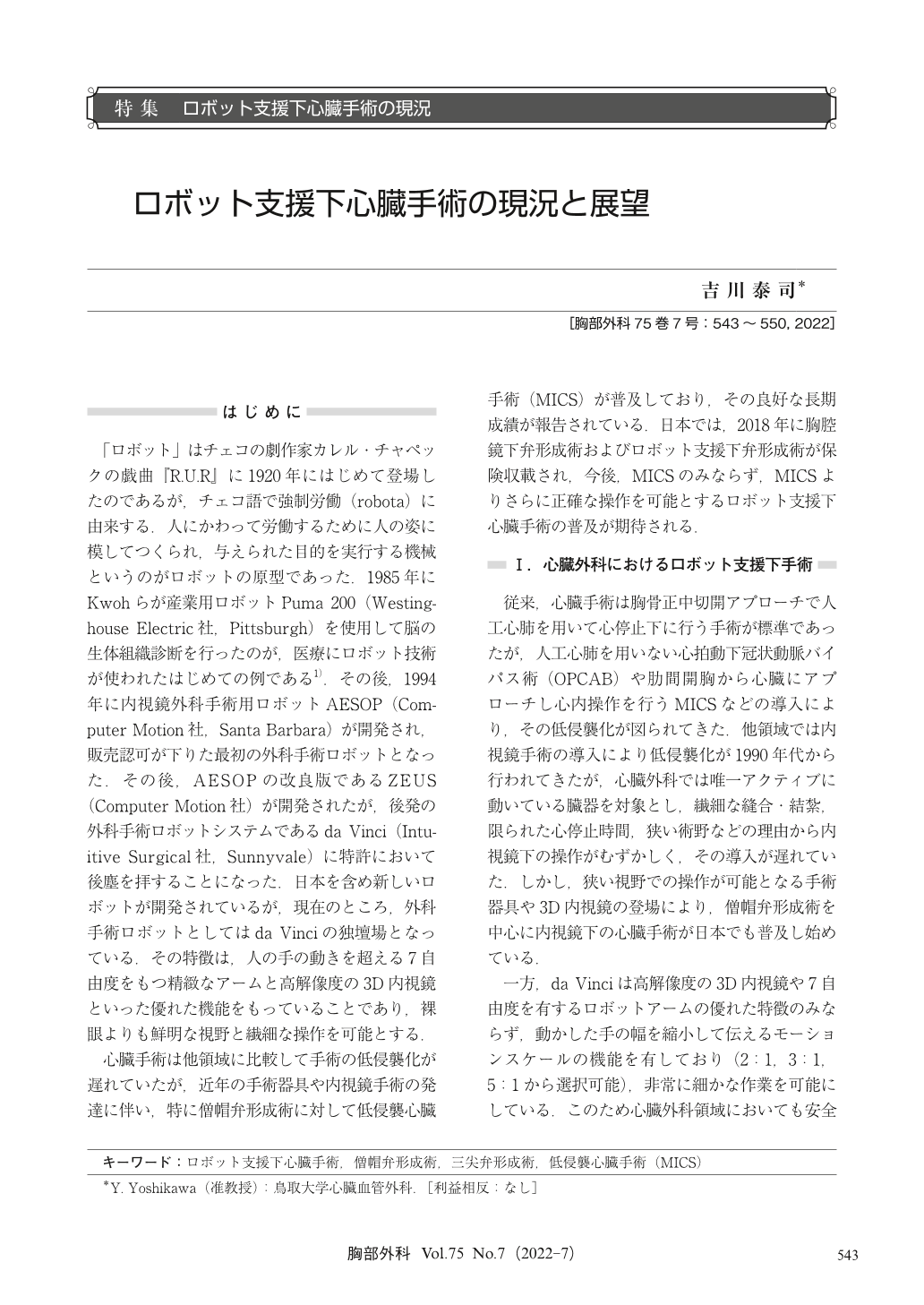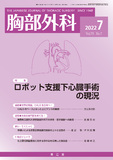Japanese
English
- 有料閲覧
- Abstract 文献概要
- 1ページ目 Look Inside
- 参考文献 Reference
「ロボット」はチェコの劇作家カレル・チャペックの戯曲『R.U.R』に1920年にはじめて登場したのであるが,チェコ語で強制労働(robota)に由来する.人にかわって労働するために人の姿に模してつくられ,与えられた目的を実行する機械というのがロボットの原型であった.1985年にKwohらが産業用ロボットPuma 200(Westinghouse Electric社,Pittsburgh)を使用して脳の生体組織診断を行ったのが,医療にロボット技術が使われたはじめての例である1).その後,1994年に内視鏡外科手術用ロボットAESOP(Computer Motion社,Santa Barbara)が開発され,販売認可が下りた最初の外科手術ロボットとなった.その後,AESOPの改良版であるZEUS(Computer Motion社)が開発されたが,後発の外科手術ロボットシステムであるda Vinci(Intuitive Surgical社,Sunnyvale)に特許において後塵を拝することになった.日本を含め新しいロボットが開発されているが,現在のところ,外科手術ロボットとしてはda Vinciの独壇場となっている.その特徴は,人の手の動きを超える7自由度をもつ精緻なアームと高解像度の3D内視鏡といった優れた機能をもっていることであり,裸眼よりも鮮明な視野と繊細な操作を可能とする.
Recently, in the field of minimally invasive approach, robotic technology has represented the latest development. Robot-assisted cardiac surgery has advantages against standard minimally invasive cardiac surgery (MICS) in terms of greater visualization, enhanced dexterity, and greater precision. However, Robot-assisted cardiac surgery requires long learning curves and a dedicated heart team. In order to avoid various risks peculiar to Robot-assisted cardiac surgery, surgical indications and safety measurement are important. In this article, surgical indications, risk management by a multidisciplinary team, and tips and tricks are described.

© Nankodo Co., Ltd., 2022


